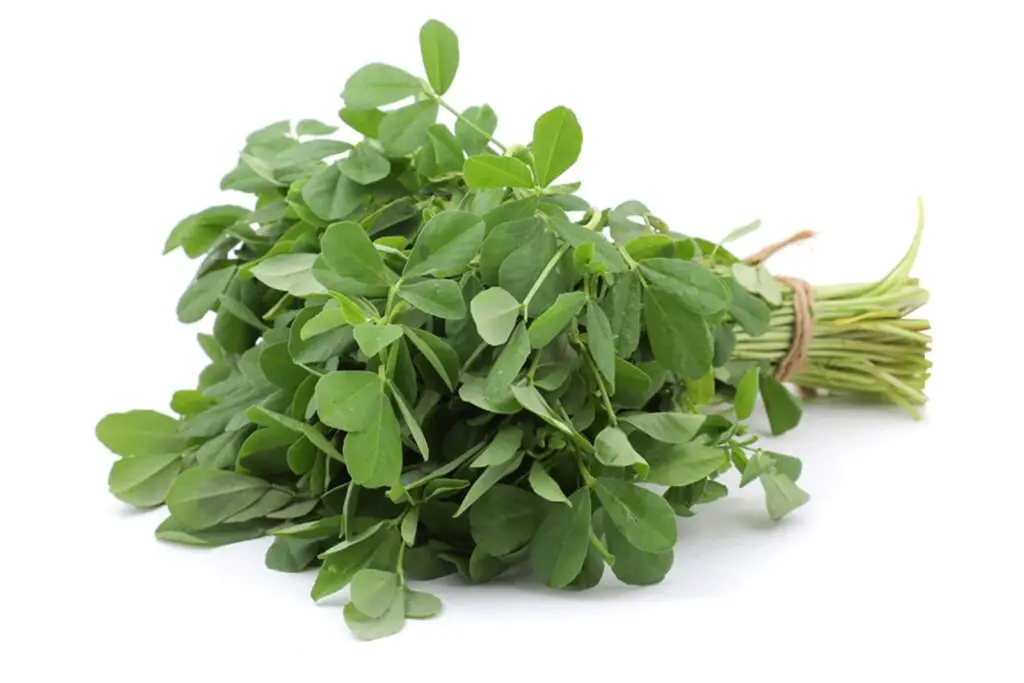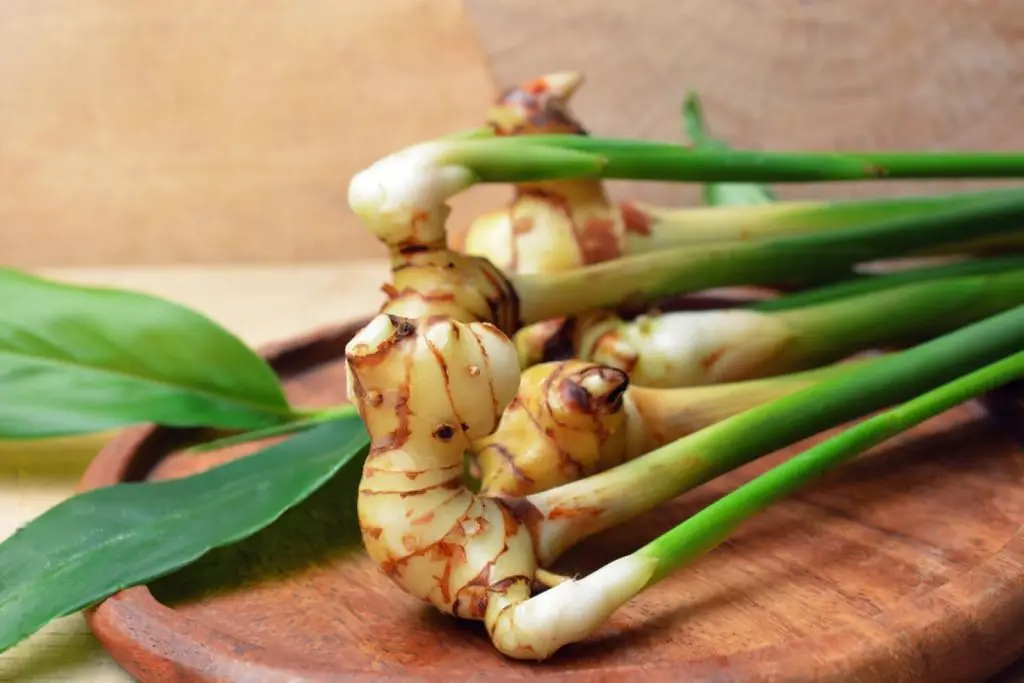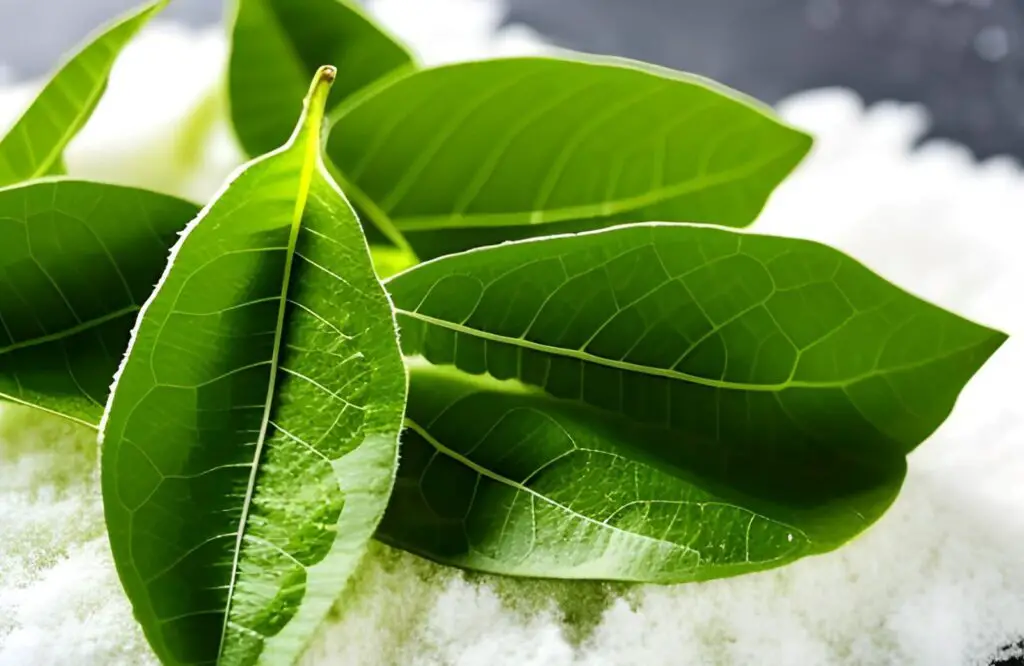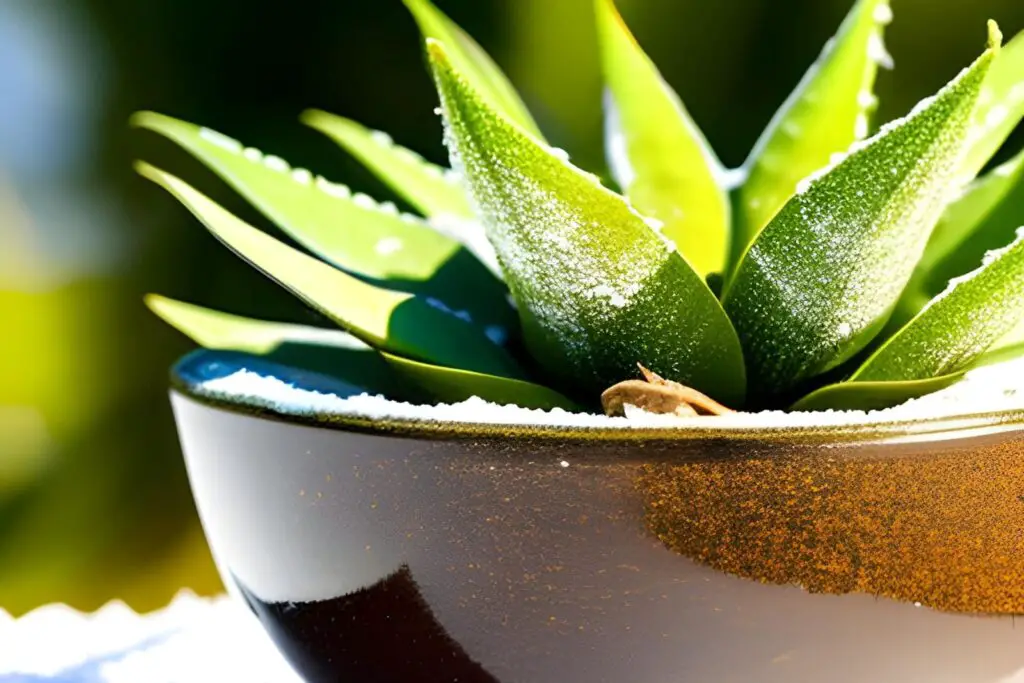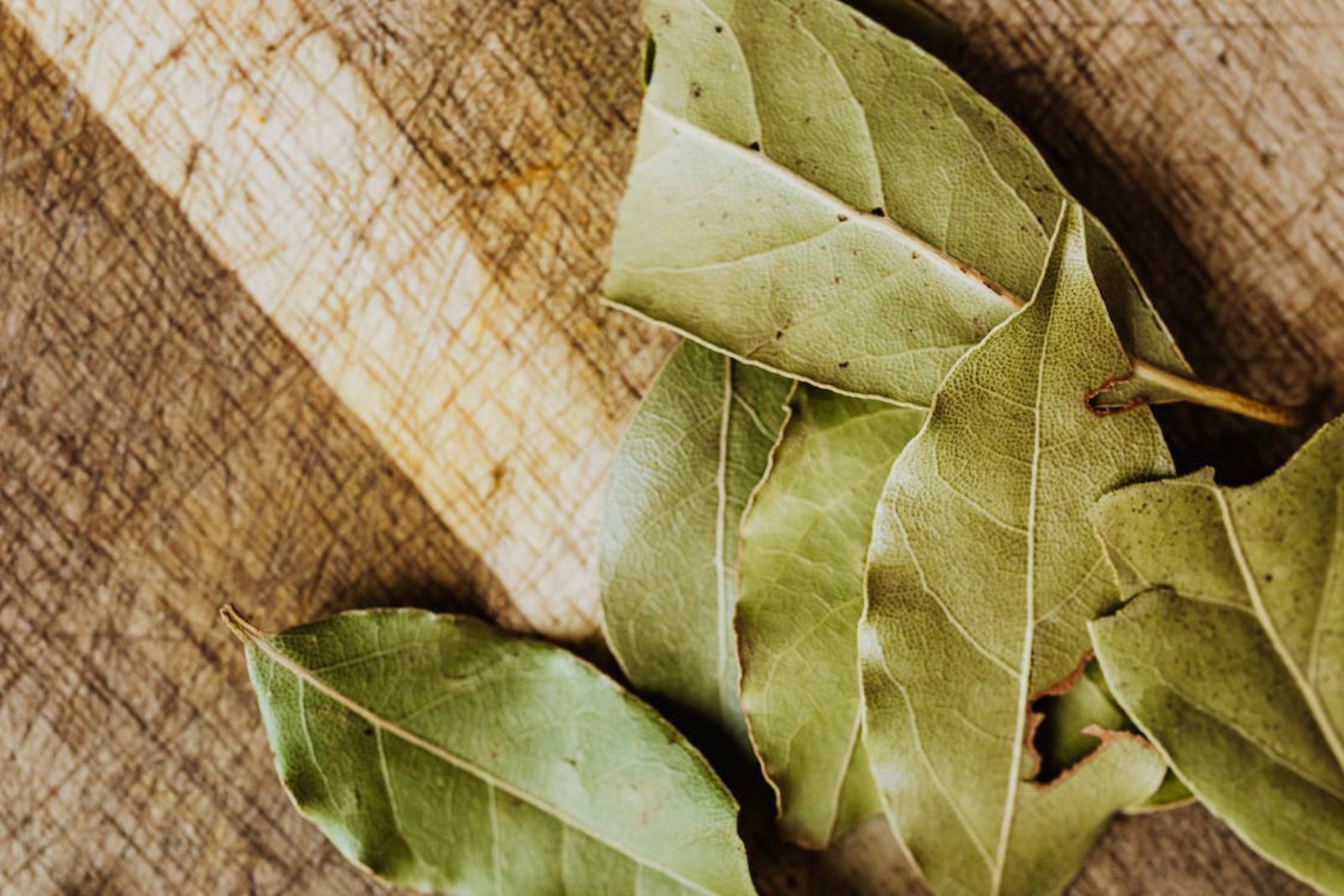
Bay leaves, a versatile and fragrant herb that adds depth and complexity to a wide range of dishes. Bay leaves are derived from the bay laurel tree and have been used in cooking for centuries. With their distinctive aroma and subtle flavor, bay leaves are often used to enhance soups, stews, sauces, and marinades, infusing them with a delightful herbal essence.
Whether dried or fresh, bay leaves offer a unique contribution to the culinary realm. If you have a surplus of bay leaves or want to prolong their shelf life, freezing them is an excellent option. In this guide, we’ll explore the art of freezing bay leaves, sharing valuable tips and techniques to preserve their aroma and potency, ensuring that you can enjoy the captivating flavors of these versatile leaves in your cooking whenever you desire, whether it’s a hearty winter stew or a fragrant summer sauce.
Here are the simple steps to freeze bay leaves:
Step 1: Select Fresh Bay Leaves
Selecting fresh bay leaves is the first and most important step in the process of freezing bay leaves. The quality of the leaves you choose will directly impact the flavor and aroma of the frozen bay leaves.
When selecting bay leaves, look for ones that are bright green in color. Avoid leaves that appear yellowish or brown, as they may be past their prime and lack the desired flavor. The leaves should be pliable and not brittle or dry. Fresh bay leaves should have a slightly glossy appearance and feel supple to the touch.
Inspect the leaves for any blemishes, discoloration, or signs of wilting. Ensure that they are free from spots or damage, as these can affect the taste and quality of the frozen bay leaves.
One way to determine the freshness of bay leaves is by their aroma. Fresh bay leaves will have a robust and aromatic scent. Take a gentle sniff of the leaves to ensure they have a pleasant fragrance. The aroma of fresh bay leaves can greatly enhance the flavor of your dishes when they are used in cooking.
By selecting fresh bay leaves, you lay the foundation for delicious and flavorful frozen bay leaves. So, take your time to choose high-quality leaves that are vibrant, pliable, and free from any blemishes or signs of wilting. Your efforts in selecting fresh bay leaves will be rewarded when you use them in your culinary creations.
Can I freeze dried bay leaves?
Yes, you can freeze dried bay leaves to extend their shelf life. Dried bay leaves are already dehydrated, so freezing them helps maintain their flavor and aroma for a longer period. Package the dried bay leaves in airtight freezer-safe bags or containers, ensuring they are fully sealed to prevent moisture absorption. Freezing dried bay leaves can preserve their quality for up to one year.
Step 2: Clean the Bay Leaves
Cleaning the bay leaves is an important step before freezing them to ensure that they are free from any dirt or impurities that may affect their quality.
To clean the bay leaves, start by gently rinsing them under cold running water. This will help remove any dust, dirt, or residues that may have accumulated on the leaves. Hold each leaf under the water and rub it between your fingers to dislodge any particles clinging to the surface.
While rinsing, inspect the leaves carefully to ensure that they are clean and free from any visible impurities. Pay attention to both sides of the leaves, including the stems, as dirt can often accumulate in these areas.
After rinsing, it’s important to dry the bay leaves thoroughly. Excess moisture can lead to ice crystals forming during freezing, which can affect the texture and quality of the leaves. You can either pat the leaves dry gently using a paper towel or allow them to air dry completely.
If you choose to pat them dry, place the rinsed leaves on a clean paper towel and lightly press another paper towel on top to absorb any remaining moisture. Be gentle to avoid damaging the leaves.
Alternatively, you can let the bay leaves air dry naturally. Lay them out in a single layer on a clean kitchen towel or a wire rack and leave them undisturbed until they are completely dry. This may take a few hours, depending on the humidity level in your kitchen.
Should bay leaves be blanched before freezing?
Blanching bay leaves before freezing is not necessary. Bay leaves can be frozen without blanching as they retain their flavor and aroma well in the freezer. Simply clean and prepare the bay leaves, portion them according to your needs, and freeze them using the preferred method, such as flash freezing or using ice cube trays.
Step 3: Prepare to Freeze
Preparing bay leaves for freezing involves dividing them into small portions that align with your typical recipe requirements. This step is crucial as it allows you to thaw and use only the necessary amount of bay leaves, minimizing waste and ensuring optimal freshness for each use.
Start by assessing your cooking habits and the quantity of bay leaves typically required in your recipes. Consider the average number of leaves you use per dish or the measurements specified in your favorite recipes. This will help you determine the appropriate portion size for each freezing package.
Next, separate the bay leaves into manageable portions. You can do this by counting the leaves and bundling them together. Depending on the size of the leaves and your preference, you can choose to package them in batches of 5, 10, or any other suitable number.
For added convenience, you can place each portion in a separate freezer-safe bag or container. This way, when you need bay leaves for a specific recipe, you can easily retrieve the desired portion without having to thaw the entire batch.
Label each bag or container with the contents (bay leaves), portion size, and date of freezing. Proper labeling ensures that you can keep track of the storage time and maintain an organized freezer inventory.
By dividing bay leaves into small portions, you have greater control over the quantity you thaw for each recipe. This method not only reduces waste but also preserves the remaining leaves in the freezer for future use, maintaining their freshness and flavor.
Step 4: Freezing Bay Leaves
Freezing bay leaves is a straightforward process that can be done using either the flash-freezing method or ice cube trays. Both methods are effective in preserving the flavor and aroma of bay leaves.
Flash Freezing:
- To flash freeze the bay leaves, start by arranging the prepared leaves in a single layer on a baking sheet or tray. Make sure the leaves do not overlap, as this will prevent them from freezing properly. Place the tray in the freezer and allow the leaves to freeze for about an hour or until they become firm. The flash-freezing process ensures that the leaves freeze quickly, preserving their quality. Once the bay leaves are frozen, transfer them into airtight freezer-safe bags or containers. It’s important to use freezer-safe packaging to prevent freezer burn and maintain the freshness of the leaves. Before sealing the bags or containers, label them with the date of freezing. This will help you keep track of their storage time. Store the frozen bay leaves in the freezer for up to six months.
Using Ice Cube Trays:
- Another method for freezing bay leaves is to use ice cube trays. Simply place one or two leaves in each compartment of the tray. If desired, you can cover the leaves with water or vegetable broth. This helps prevent freezer burn and keeps the leaves moist during freezing. Place the ice cube tray in the freezer and allow the liquid to completely freeze.
- Once the bay leaf cubes are frozen, remove them from the tray and transfer them to a freezer-safe bag or container. Again, ensure proper labeling with the date of freezing for easy reference. This method is particularly useful if you prefer to have measured portions of bay leaves readily available for your recipes.
By choosing either the flash freezing method or using ice cube trays, you can freeze bay leaves effectively while preserving their quality. Both methods offer convenience and allow you to easily retrieve the desired amount of bay leaves for your cooking needs.
How long can bay leaves last in the freezer?
Bay leaves can last in the freezer for up to 1 year without significant loss in flavor or quality. When stored properly in airtight freezer-safe bags or containers, bay leaves can maintain their freshness and aroma for an extended period. It is recommended to label the packaging with the date of freezing and use them within a year for the best results.
Step 5: Thaw the Frozen Bay Leaves
Thawing frozen bay leaves is a simple process that allows you to use them in your recipes effectively. There are two main methods for thawing frozen bay leaves: thawing at room temperature and using them directly in hot liquids or dishes.
Thawing at Room Temperature:
To thaw frozen bay leaves at room temperature, remove the desired quantity of leaves from the freezer and place them on a plate or in a bowl. Allow them to thaw for a few minutes until they reach room temperature. The leaves will become pliable and ready for use in your recipe. This method is suitable when you have planned ahead and can allow some time for the leaves to thaw naturally.
Using Directly in Hot Liquids or Dishes:
An alternative method is to add the frozen bay leaves directly to hot liquids or dishes without thawing them. This method is particularly useful when you’re preparing soups, stews, or sauces that require simmering or cooking for an extended period. The frozen leaves will defrost quickly in the hot liquid or dish and release their flavors as they cook. This allows you to add the bay leaves directly from the freezer, saving time and effort.
When using frozen bay leaves in hot liquids or dishes, it’s important to note that you may need to adjust the cooking time slightly. Since frozen leaves take a little longer to release their flavors, you may want to extend the cooking time by a few minutes to ensure the desired taste and aroma.
Thawing frozen bay leaves is a straightforward process. You can either thaw them at room temperature or add them directly to hot liquids or dishes. Both methods ensure that the bay leaves are ready to enhance your recipes and deliver their distinct flavors.
Other related questions
Can you refreeze bay leaves?
It is generally not recommended to refreeze bay leaves once they have been thawed. Freezing and thawing bay leaves multiple times can affect their quality and flavor. It is best to use the desired quantity of bay leaves from the freezer and avoid refreezing any leftovers to preserve their freshness and taste.
How do I know if the bay leaves have gone bad after being frozen?
To determine if bay leaves have gone bad after being frozen, check for any signs of spoilage or deterioration. If the leaves appear discolored, have a strange or unpleasant odor, or show signs of freezer burn, they may have gone bad. Additionally, if the leaves have become excessively brittle or have a rancid taste, it is best to discard them as they may no longer be suitable for consumption.
Can I freeze bay leaves in oil?
Freezing bay leaves in oil is not recommended due to safety concerns. Botulism bacteria can grow in an anaerobic (oxygen-free) environment, such as oil, when combined with low temperatures. Freezing bay leaves in oil increases the risk of botulism contamination, making it unsafe for consumption. It is best to freeze bay leaves using alternative methods such as flash freezing or using ice cube trays.
Can I freeze bay leaves with other herbs?
Yes, you can freeze bay leaves with other herbs if desired. However, it is important to consider the compatibility of the herbs you plan to freeze together. Some herbs may retain their flavor and quality better when frozen separately. If freezing them together, ensure they are properly cleaned, dried, and packaged in airtight containers or bags to prevent flavor transfer.
Are there any alternative methods for preserving bay leaves besides freezing?
Yes, there are alternative methods for preserving bay leaves besides freezing. One common method is drying bay leaves, which involves air-drying or using a dehydrator to remove moisture from the leaves. Dried bay leaves can be stored in airtight containers and used for an extended period. Additionally, another method is preserving bay leaves in oil, where the leaves are submerged in oil to enhance their flavor and preserve them for culinary use.

